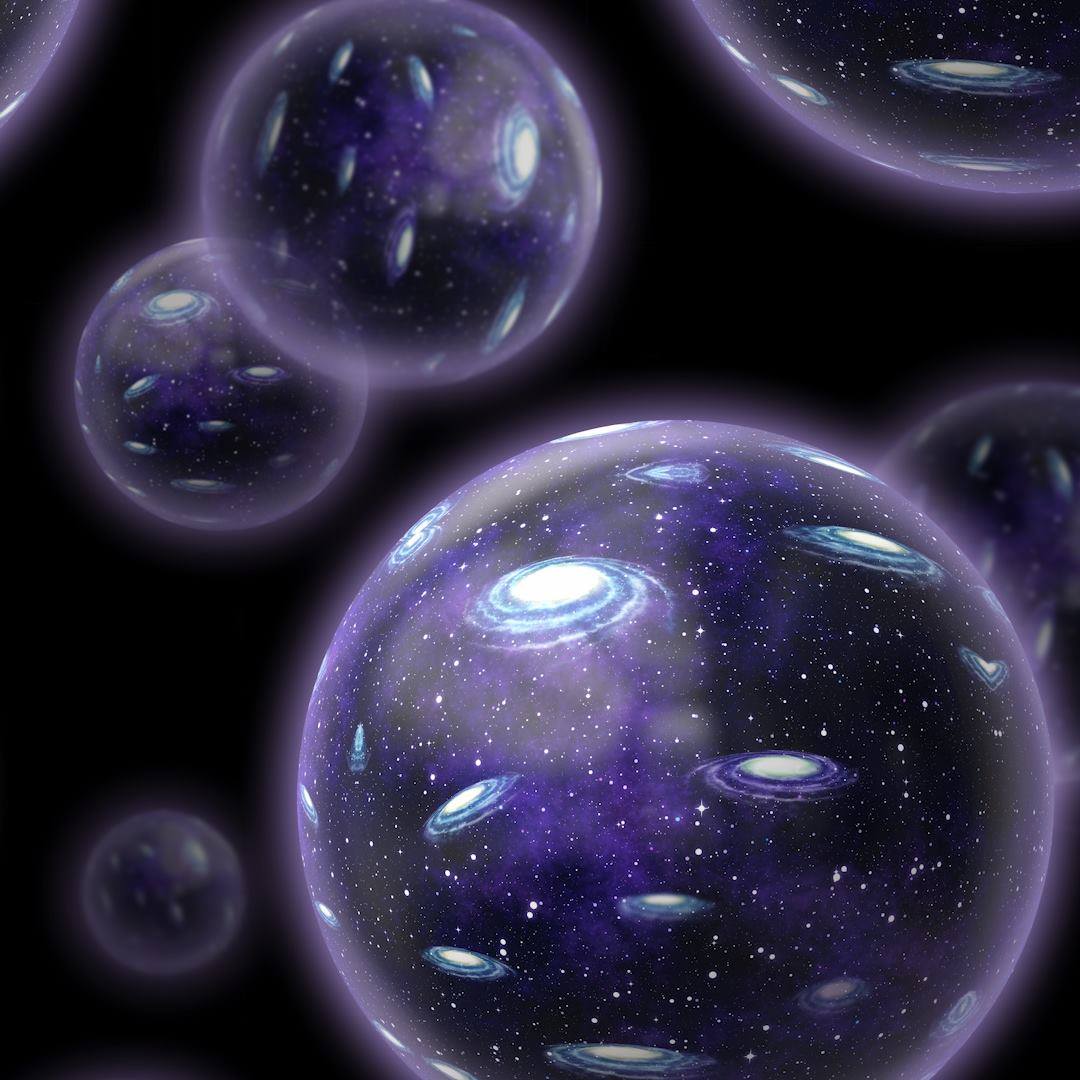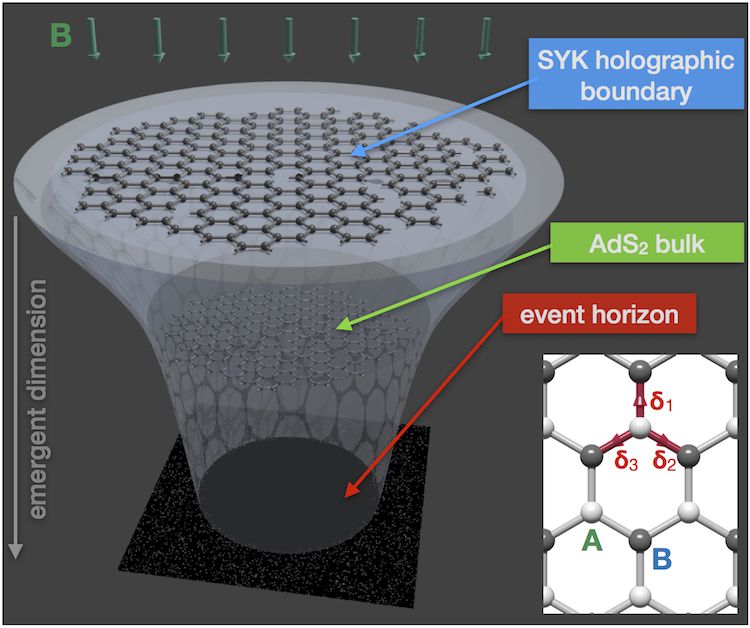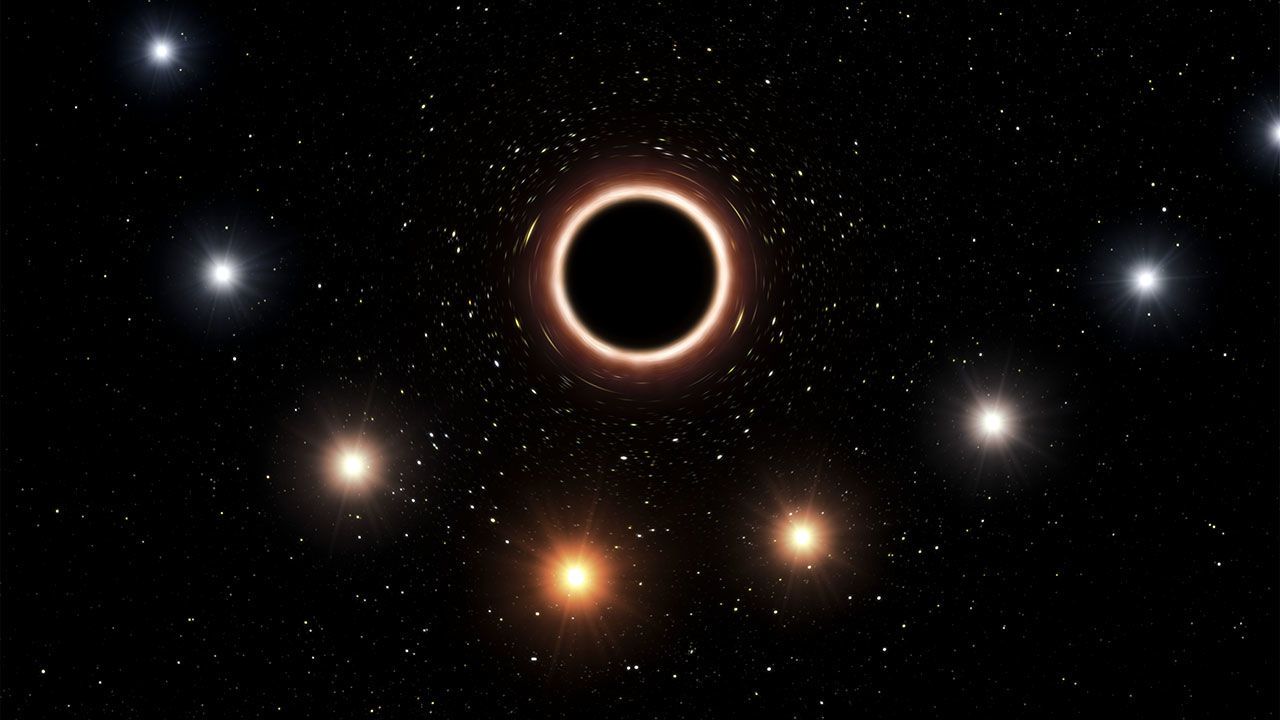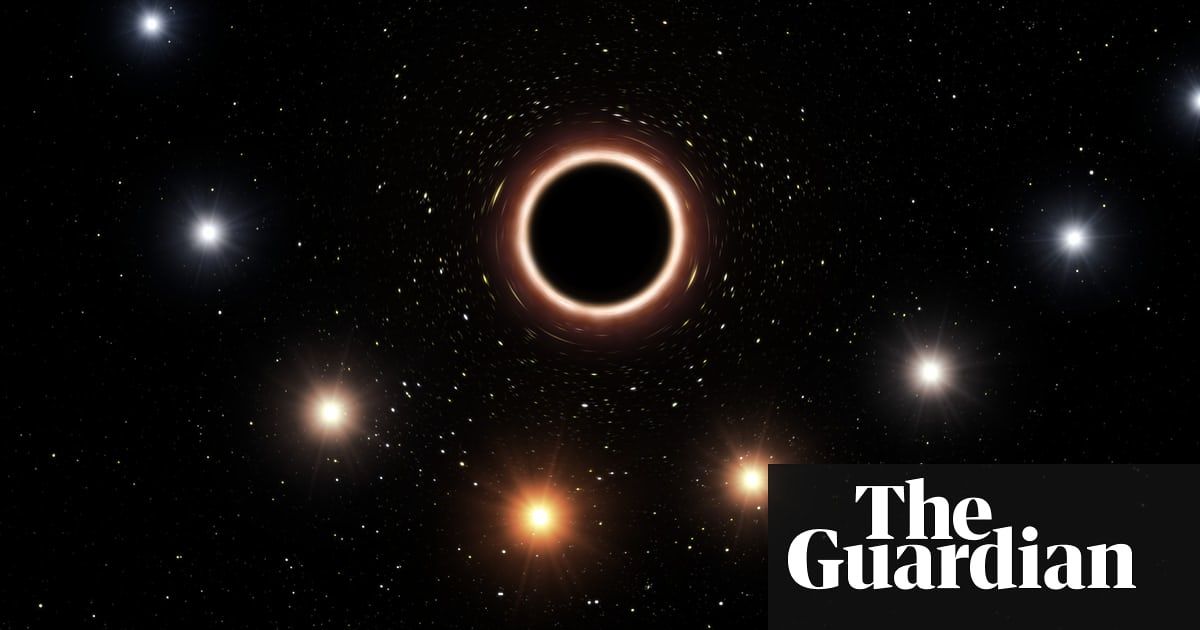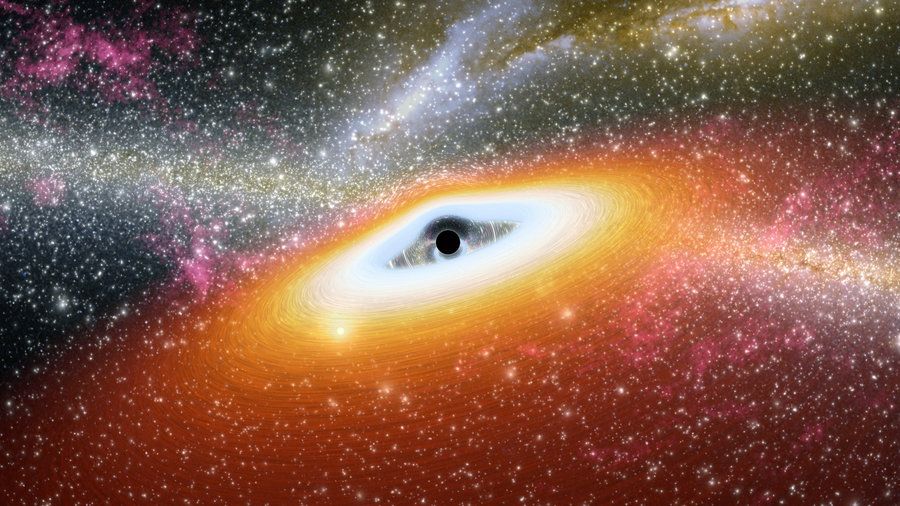Archive for the ‘cosmology’ category: Page 368
Aug 2, 2018
Black hole hologram appears in a graphene flake
Posted by Klaus Baldauf in categories: cosmology, holograms, quantum physics
Much research on black holes is theoretical since it is difficult to make actual measurements on real black holes. Such experiments also need to be undertaken over decades or longer. Physicists are therefore keen to create laboratory systems that are analogous to these cosmic entities. New theoretical calculations by a team in Canada, the US, UK and Israel have now revealed that a material as simple as a graphene flake with an irregular boundary subjected to an intense external magnetic field can be used to create a quantum hologram that faithfully reproduces some of the signature characteristics of a black hole. This is because the electrons in the carbon material behave according to the Sachdev-Ye-Kitaev model.
Some of the most important unresolved mysteries in modern physics come from the “incompatibility” between Einstein’s theory of general relativity and the theory of quantum mechanics. General relativity describes the physics of the very big (the force of gravity and all that it affects: spacetime, planets, galaxies and the expansion of the Universe). The theory of quantum mechanics is the physics of the very small – and the other three forces, electromagnetism and the two nuclear forces.
“In recent years, physicists have gleaned important new insights into these questions through the study of the SYK model,” explains Marcel Franz of the University of British Columbia in Canada, who led this research effort. “This model is an illustration of a type of ‘holographic duality’ in which a lower-dimensional system can be represented by a higher dimensional one. In our calculations, the former is N graphene electrons in (0+1) dimensions and the latter the dilation gravity of a black hole in (1+1) dimensional anti-de Sitter (AdS2) space.
Continue reading “Black hole hologram appears in a graphene flake” »
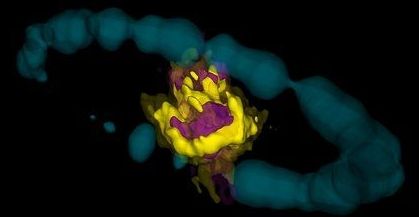
This video takes the viewer on a tour of a 3D image of the supernova 1987 A, created using data collected by the international astronomy facility ALMA. The p urple area indicates emission from SiO molecules and the yellow area indicates emission from CO molecules. The blue ring is NASA/ESA Hubble Space Telescope data that has been artificially expanded into 3D.
Jul 30, 2018
Einstein’s general relativity confirmed near black hole
Posted by Shailesh Prasad in category: cosmology
Observations made with ESO’s Very Large Telescope have for the first time revealed the effects predicted by Einstein’s general relativity on the motion of a star passing through the extreme gravitational field near the supermassive black hole in the center of the Milky Way. This long-sought result represents the climax of a 26-year-long observation campaign using ESO’s telescopes in Chile.
Credit: European Space Observatory
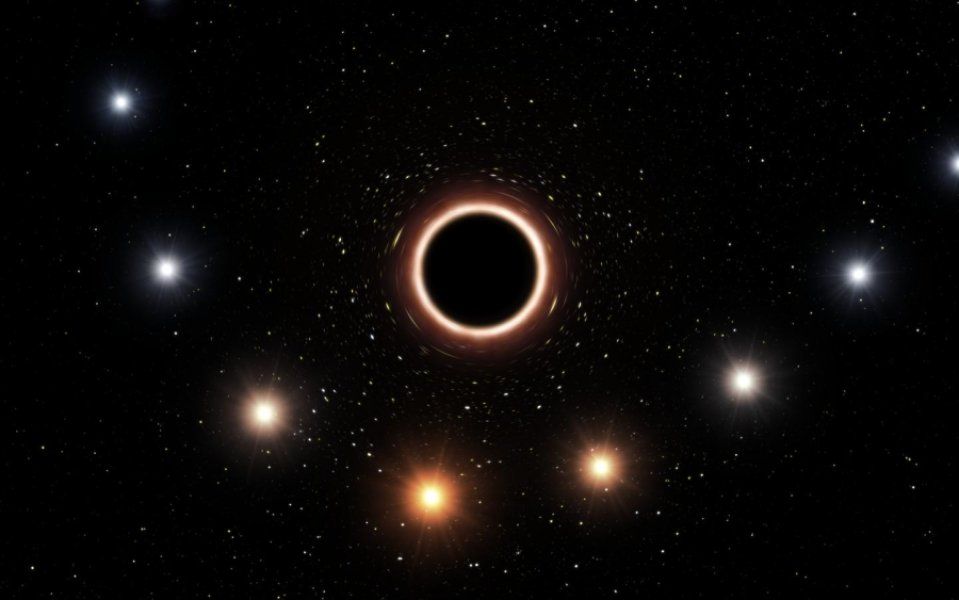
Jul 30, 2018
Scientists Poke Holes in Supernova ‘Firewall’ Theory
Posted by Genevieve Klien in category: cosmology
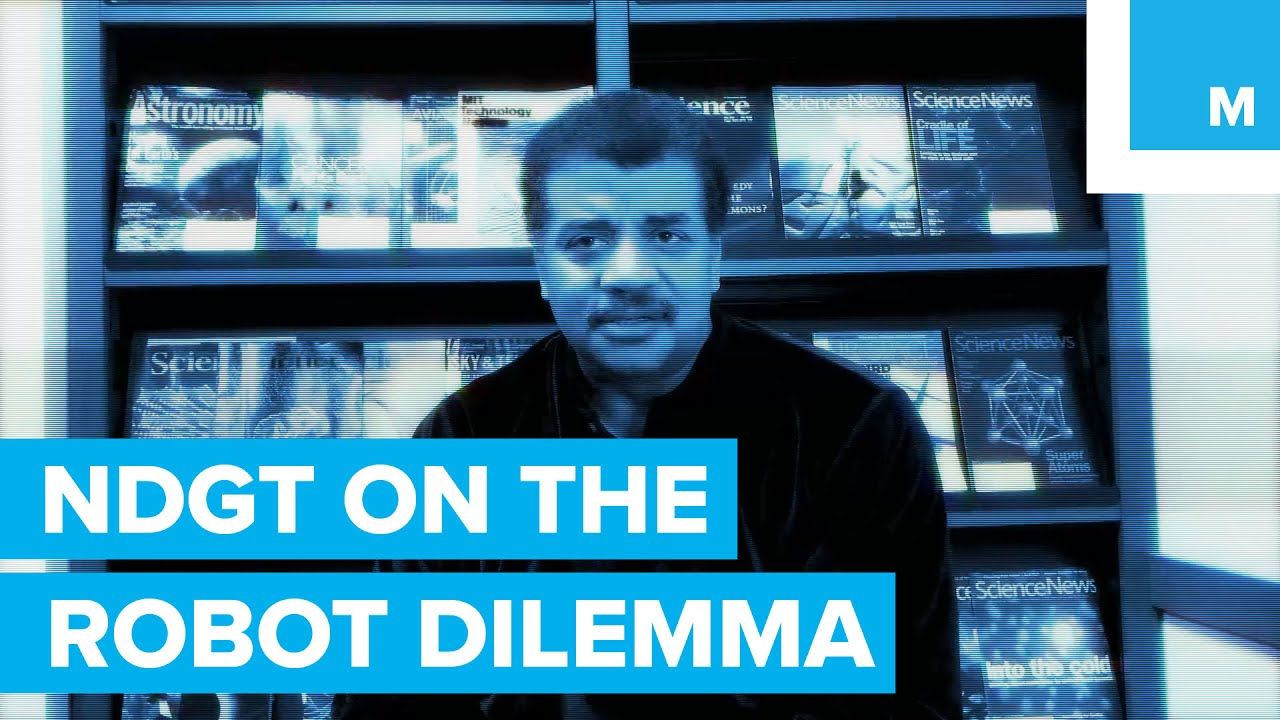
Love is a burning thing and it makes a fiery ring. Black holes, however, do not.
New research disproves the so-called “firewall” theory, which suggests the ring of fire around a supernova would incinerate anything sucked into its gravitational pull.
Continue reading “Scientists Poke Holes in Supernova ‘Firewall’ Theory” »
Jul 30, 2018
Tomato, ToMacco: Farmers are elevating their crops with vertical farming
Posted by Bill Kemp in categories: cosmology, humor, sustainability
With more than 5.6 million articles, Wikipedia is an invaluable resource, whether you’re throwing a term paper together at the last minute, or doing legal research on whether it can really be considered assault if your victim habitually made the “cows outstanding in their field” joke. We explore some of Wikipedia’s oddities in our 5,690,195-week series, Wiki Wormhole.
This week’s entry: Vertical farming
What it’s about: Ah, the farmer’s life. The smell of the soil, the green of the leaves, the view from the 45th floor. Yes, like bathrooms before them, farms are moving into the future by moving indoors. Hydroponic farming has made vertical farms possible, in which floor after floor of a building is devoted to growing food. One such farm in Buffalo, New York contains 17 million plans, and a “windowless farm” in Kyoto produces 6 million heads of lettuce a year.
Continue reading “Tomato, ToMacco: Farmers are elevating their crops with vertical farming” »
Jul 26, 2018
Star’s black hole encounter puts Einstein’s theory of gravity to the test
Posted by Genevieve Klien in categories: cosmology, physics
For more than 20 years, a team of astronomers has tracked a single star whipping around the supermassive black hole at the center of our galaxy at up to 25 million kilometers per hour, or 3% of the speed of light. Now, the team says the close encounter has put Albert Einstein’s theory of gravity to its most rigorous test yet for massive objects, with the light from the star stretched in a way not prescribed by Newtonian gravity. In a study announced today, the team says it has detected a distinctive indicator of Einstein’s general theory of relativity called “gravitational redshift,” in which the star’s light loses energy because of the black hole’s intense gravity.
“It’s really exciting. This is such an amazing observation,” says astronomer Andrea Ghez of the University of California, Los Angeles (UCLA), who heads a rival group that is also tracking the star. “This is a direct test [of relativity] that we’ve both been preparing for for years.”
The star, called S2, is unremarkable apart from a highly elliptical orbit that takes it within 20 billion kilometers, or 17 light-hours, of the Milky Way’s central black hole—closer than any other known star. A team led by Reinhard Genzel at the Max Planck Institute for Extraterrestrial Physics (MPE) in Garching, Germany, has been tracking S2 since the 1990s, first with the European Southern Observatory’s (ESO’s) 3.6-meter New Technology Telescope in Chile’s Atacama Desert and later with ESO’s Very Large Telescope (VLT), made up of four 8-meter instruments. Ghez’s team at UCLA also began to observe the star around the same time with the twin 10-meter Keck telescopes in Hawaii.
Continue reading “Star’s black hole encounter puts Einstein’s theory of gravity to the test” »
Jul 26, 2018
Culmination of 26 years of ESO observations of the heart of the Milky Way
Posted by Steve Nichols in categories: cosmology, physics
Observations made with ESO’s Very Large Telescope have for the first time revealed the effects predicted by Einstein’s general relativity on the motion of a star passing through the extreme gravitational field near the supermassive black hole in the centre of the Milky Way. This long-sought result represents the climax of a 26-year-long observation campaign using ESO’s telescopes in Chile.
Obscured by thick clouds of absorbing dust, the closest supermassive black hole to the Earth lies 26 000 light-years away at the centre of the Milky Way. This gravitational monster, which has a mass four million times that of the Sun, is surrounded by a small group of stars orbiting around it at high speed. This extreme environment — the strongest gravitational field in our galaxy — makes it the perfect place to explore gravitational physics, and particularly to test Einstein’s general theory of relativity.
New infrared observations from the exquisitely sensitive GRAVITY [1], SINFONI and NACO instruments on ESO’s Very Large Telescope (VLT) have now allowed astronomers to follow one of these stars, called S2, as it passed very close to the black hole during May 2018. At the closest point this star was at a distance of less than 20 billion kilometres from the black hole and moving at a speed in excess of 25 million kilometres per hour — almost three percent of the speed of light [2].
Jul 26, 2018
Star spotted speeding near black hole at centre of Milky Way
Posted by Shailesh Prasad in category: cosmology
Chile’s Very Large Telescope tracks S2 star as it reaches mind-boggling speeds by supermassive black hole.
Hannah Devlin Science correspondent.
Jul 21, 2018
Black holes, quasars & supernova: The most astounding phenomenon in outer space
Posted by Genevieve Klien in category: cosmology
Everything you wanted to know about black holes, supernova, and quasars but were afraid to ask.
